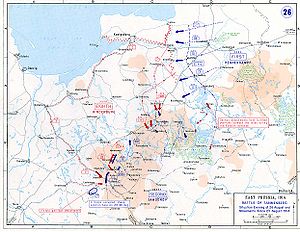

He developed his own distinct style with sharply defined forms, bright colors and often included humor. Hohlwein's most artistically important phase was before World War II in the years 1912-1925. This World War I timeline of battles outlines the most important engagements of the 1914-1918 war, from the first Battle of Mons to the final 1918 armistice. He developed a creative use of color and compositions. Hohlwein's adaptations of photographic images was based on a deep understanding of graphical principles.

He was trained and practiced as an architect until 1906 when he switched to poster design. Ludwig Hohlwein (1874-1949) was a German poster artist. One of the main reasons for the victory was the German guns' undoubted superiority and especially their heavy artillery. The battle was a strategic victory for the Germans in the east. Money raised through the Ludendorff Fund provided welfare and assisted in the rehabilitation of disabled German First World War soldiers. Unveiling of the monument to the Battle of Tannenberg.

After the war, Ludendorff became a prominent nationalist leader. From August 1916 his appointment as Quartermaster general made him joint head (with Paul von Hindenburg), and chief engineer behind the management of Germany's effort in World War I until his resignation in October 1918. World War I: During this war, the Central Powers (Germany, Austria-Hungary, Bulgaria, and the Ottoman Empire) fought against the Allied Powers (Russia, Great Britain, France, Romania. Hohlweins most artistically important phase was before World War II in the years 1912. What does the Ducksters reading say about the. From August 1916 his appointment as Quartermaster. Erich joined the German general staff in 1894, at the age of 18, where he helped in the revision of the Schlieffen Plan. The Russian army paused and the German army didnt pause and the Russian army stayed back and fought the Germans. This battle was fought at the beginning of World War I. Erich Ludendorff was a world renowned German general whose contribution in the victories of ‘Battle of Lige’ and the ‘Battle of Tannenberg’ was quite significant. The Ludendorff Foundation was named after General Erich von Ludendorff (1865-1937), a German general, victor of Liège and of the Battle of Tannenberg. Battle of Tannenberg: This battle started on August 26, 1914, and it ended four days later on August 30. The German text on the poster translates as ''give to the Ludendorff Foundation for war invalids'. The poster asks people to give to the Ludendorff Fund for the War disabled. First World War German poster depicting a wounded veteran holding a hammer and pincers in his right hand and a crutch in his left.


 0 kommentar(er)
0 kommentar(er)
